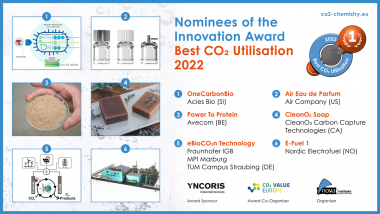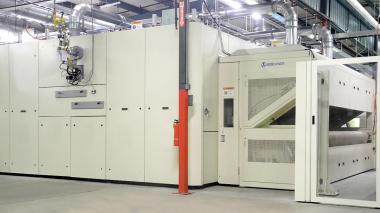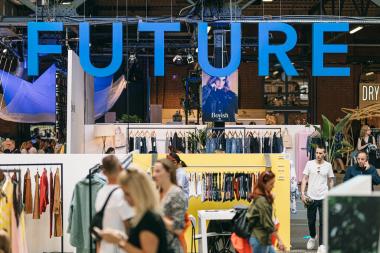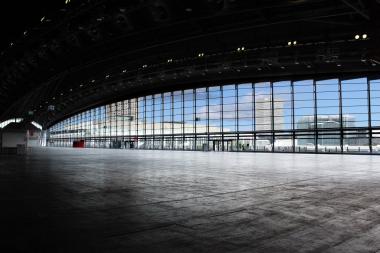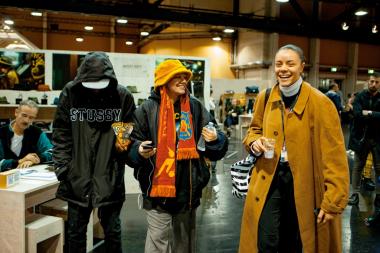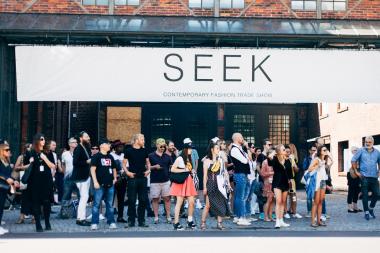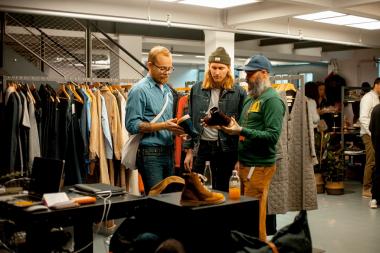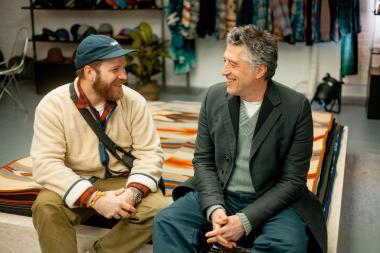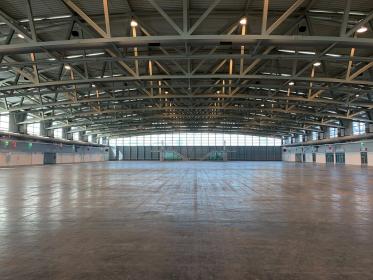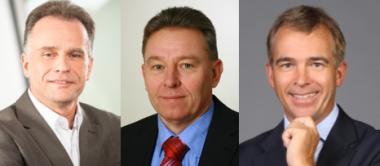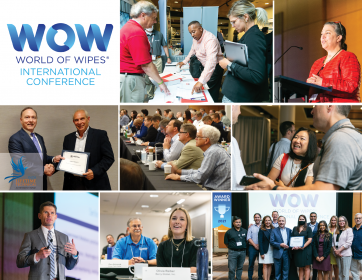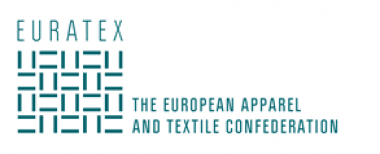“Best CO2 Utilisation 2022” Award Nominees
- Six Carbon Capture and Utilisation technologies for a sustainable chemical and fuel production nominated for the innovation award “Best CO2 Utilisation 2022”
- Conference on CO2-based Fuels and Chemicals 2022 – Cologne (Germany) and online, hybrid conference, 23-24 March 2022
Carbon Capture and Utilisation (CCU) Innovations of the Year 2022: A lot of technologies are in place and in development to face the challenges of a sustainable chemicals and fuels production based on the utilisation of captured CO2 from industrial off-gases or directly from the atmosphere. To honor these, nova-Institute grants its annual award, “Best CO2 Utilisation”, within the framework of the “Conference on CO2-based Fuels and Chemicals” taking place in Cologne on 23-24 March 2022. Great submissions reached the nova-Institute and six nominees now get the chance to demonstrate their full potential to a wide audience in Cologne (Germany) and online.
Here are the six nominees:
- Acies Bio (SI) – OneCarbonBio
- Air Company (US) – Air Eau de Parfum
- Avecom (BE) – Power To Protein
- CleanO2 Carbon Capture Technologies (CA) – CleanO2 Soap
- Fraunhofer Institute for Interfacial Engineering and Biotechnology IGB (DE) – eBioCO2n Technology
- Nordic Electrofuel (NO) – E-Fuel 1
Best CO2 Utilisation 2022 Nova Institut Acies Bio OneCarbonBio Air Company Air Eau de Parfum Avecom Power To Protein CleanO2 Carbon Capture Technologies eBioCO2n Technology Nordic Electrofuel CleanO2 Soap Fraunhofer Institute for Interfacial Engineering and Biotechnology IGB
Nova Institute


